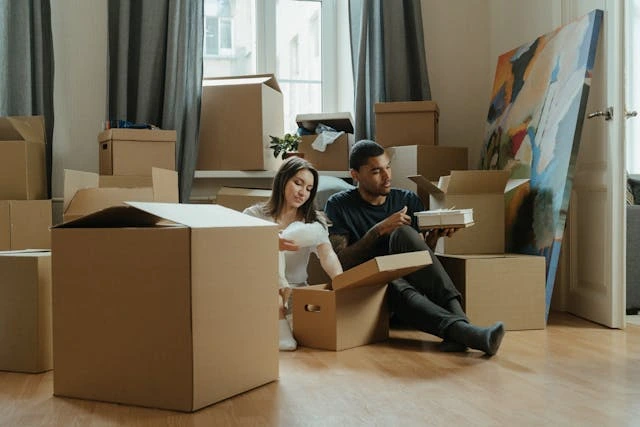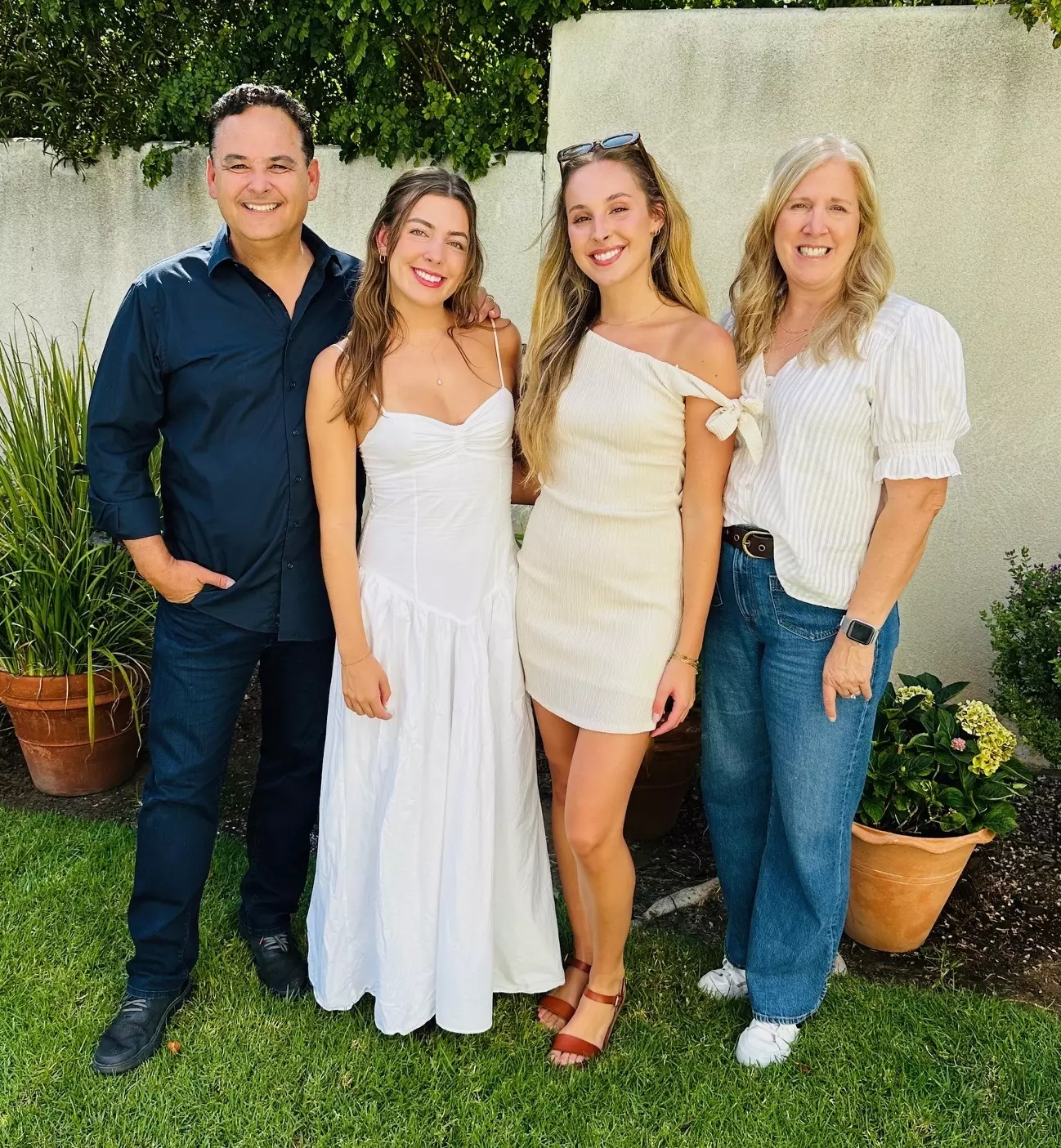San Diego Home Newsletter
|
|
|
⭐ Client Success Story
“We’re sitting here enjoying the sunset, thinking of our wonderful real estate agent. We continue to be so thankful we persevered forward despite the 2020 craziness. Just about five years! — Kristen and Bill, San Diego, CA 2025”

In This Issue:
-
How to Make Your Move Smoother Faster and Less Stressful — Smart planning strategies to reduce chaos, lower costs, and keep your move organized from start to finish.
Read More » -
Inspection Proof Your Sale: Get Ready Before Buyers Arrive — Learn how to avoid surprises, reduce renegotiations, and show your home in its best light before the inspection happens.
Read More » -
How To Win Without Overpaying: Negotiation Tips That Work — Proven strategies that help buyers secure the right home without overspending or getting caught in a bidding war.
Read More »
How to Make Your Move Smoother Faster and Less Stressful
Summary
Moving is one of life’s most stressful events—but it doesn’t have to be. With smart planning and the right strategies, you can minimize chaos, reduce costs, and protect your peace of mind. This guide offers a step-by-step approach to making your move smoother, faster, and more organized—whether you’re relocating across town or across the country.
Moving may mark the beginning of an exciting new chapter—but it’s also a major logistical undertaking. From packing and paperwork to timelines and transitions, it’s easy to get overwhelmed. That’s why a well-organized move plan makes all the difference.
Here’s how to make your move smoother, faster, and far less stressful.

 1. Start Early—Earlier Than You Think
1. Start Early—Earlier Than You Think
Begin prepping at least 6–8 weeks before your move date:
- Declutter your home and donate/sell unused items
- Research moving companies and get quotes
- Create a moving binder or digital folder to track tasks
Divide your tasks into weekly to-dos:
- Week 6: Notify landlord, schedule movers, start purging
- Week 4: Change address, order packing supplies
- Week 2: Confirm plans, start serious packing
- Week 1: Pack essentials box, defrost freezer, clean
For peak seasons (spring/summer), movers book quickly. Compare:
- Full-service movers
- Truck rental + friends/family
- Hybrid options (labor-only help)
Get insurance for valuables and check mover reviews.
4. Pack Like a Pro- Label boxes by room and color code
- Write key contents on the sides
- Wrap fragile items in towels or clothes
- Use suitcase space for heavy items (books, tools)
- Pack essentials separately (clothes, toiletries, chargers, meds)
Don’t forget to:
- Cancel or transfer electricity, gas, water, internet
- Schedule service start dates at your new place
- Forward your mail via your national postal service
- Update addresses on bank accounts, ID, insurance, and subscriptions
Make arrangements for:
- Childcare or pet care on moving day
- Transportation of pets and plants
- School transfers and medical records
If you’re not hiring movers:
- Rent proper moving equipment (dollies, straps, blankets)
- Protect floors and doorways
- Ask friends early and provide snacks or compensation
Don’t leave cleaning to the last day. Clean room-by-room as you pack. For rentals, photograph everything for your deposit.
9. Handle EmotionsMoving can bring grief, anxiety, or fatigue—especially for kids or seniors. Give everyone time to adjust and say goodbye to their space. Plan fun or relaxing activities after move-in.
10. Unpack Strategically- Focus on essentials (kitchen, beds, bathroom) first
- Leave décor or extras for later
- Flatten and recycle boxes as you go
- Update your home inventory
Apps like Sortly (for inventory), TaskRabbit (for help), and Google Sheets (for tracking) can streamline the process.
Moving doesn’t have to mean chaos. With a plan in place, a few hacks, and a little help, you can turn a stressful event into a smooth transition. Start early, stay organized, and take it step by step—and your next move might be your easiest yet.
Inspection Proof Your Sale Get Ready Before Buyers Arrive
Summary
The home inspection can make or break your sale. It’s the moment buyers discover what’s beneath the surface—and any surprises can lead to renegotiations, delays, or even a collapsed deal. This report shows you how to inspection-proof your home with smart pre-listing repairs, preventative fixes, and buyer-friendly presentation. Don’t wait for bad news—prepare now and protect your sale.
You’ve accepted an offer, and the buyer is excited. But there’s one major step before closing: the home inspection. It’s the buyer’s chance to uncover problems—and their leverage to ask for repairs, credits, or even walk away. Avoiding surprises and showing your home in its best light is key to a smooth, profitable sale. Here’s how to get inspection-ready.


- Understand What Inspectors Look For
Inspectors are trained to assess:- Roofing, gutters, and drainage
- Electrical panels, outlets, and wiring
- Plumbing systems and water pressure
- HVAC operation and ventilation
- Structural integrity (foundation, framing, windows)
- Attic, insulation, and crawlspaces
- Appliances, walls, floors, and ceilings
- Safety features like smoke detectors, carbon monoxide alarms, handrails
They don’t evaluate décor or cosmetic flaws—but serious maintenance issues will be flagged.
- Do a Pre-Listing Inspection (Optional but Smart)
Hiring your own inspector before listing allows you to:- Uncover and fix hidden issues early
- Price your home more accurately
- Avoid surprises during negotiations
- Build buyer trust by showing transparency
You don’t have to fix everything—but knowing what’s ahead helps you prepare.
- Tackle Easy Repairs Ahead of Time
Before inspection day, fix any obvious red flags like:- Leaky faucets or toilets
- Flickering lights or non-working outlets
- Loose handrails or steps
- Missing smoke detectors
- Water stains or signs of past leaks
- Doors or windows that stick or won’t lock
These are inexpensive but reassure buyers the home is well-maintained.
- Service Major Systems
If your HVAC, water heater, or roof are older but functional, get them professionally serviced and keep the paperwork. Inspectors note signs of wear, but maintenance records can help buyers feel confident.
- Clean and Declutter Utility Areas
Clear the way to the attic, furnace, electrical panel, and crawlspaces. Inspectors need access—and a clean space sends the message that your home is cared for.
- Label Systems and Shutoffs
Label water shutoff valves, fuse box switches, and any non-obvious features. This helps inspectors and shows you’re organized and proactive.
- Test Everything in Advance
Check that light switches, appliances, garbage disposals, fans, and garage doors work properly. If they don’t, fix them now to avoid last-minute stress.
- Leave the House (and the Lights On)
During the inspection, you (and pets) should leave the home. Turn on lights in all rooms and leave a note with any helpful details or quirks. Let the inspector do their job undisturbed.
- Prepare for the Report
Even the cleanest home will have a few inspection findings—no home is perfect. Be ready to:- Fix major issues
- Offer repair credits
- Renegotiate if necessary
Your agent can help you respond strategically.
- Bonus: Create an Inspection Binder
Impress buyers by leaving a binder or folder with:- Maintenance records
- Recent repair invoices
- Manuals for appliances
- Warranty information
It shows pride of ownership and reduces buyer anxiety.
Conclusion:
A smooth inspection starts long before the inspector arrives. By addressing issues ahead of time and presenting your home as well-cared-for, you minimize surprises and maximize buyer confidence. Don’t let preventable problems derail your sale—get ahead of the inspection and keep your closing on track.
How To Win Without Overpaying Negotiation Tips That Work
Summary
In a competitive market, paying more isn’t the only way to win. This report shares proven negotiation strategies that help buyers secure their dream home, without falling into a bidding war trap. From reading the seller’s signals to crafting creative offers, you’ll learn how to stand out, stay on budget, and make a winning move with confidence.


When the market is hot, it’s easy to feel like the only way to win a home is to overpay. But savvy buyers know that smart strategy, not just big numbers, can make the difference. Whether you’re buying your first home or your fifth, here’s how to negotiate like a pro and come out ahead.
1. Get Pre-Approved, Not Just Pre-QualifiedA pre-approval letter from a trusted lender shows sellers you’re serious and financially ready. It gives you leverage when competing with less-prepared buyers.
2. Know the Market Before You BidUnderstand current conditions:
- Are homes selling above or below asking?
- How long are homes staying on the market?
- How many offers are typical in your target area?
Your agent can help you interpret local trends so you’re not blindly overbidding.
3. Lead With a Clean OfferContingencies are important, but too many can turn sellers off. Consider:
- Keeping inspection and appraisal timelines tight
- Offering a larger earnest money deposit
- Flexing on the closing date to suit the seller’s timeline
A clean, flexible offer can beat a slightly higher one with lots of strings attached.
4. Look for Seller SignalsWhat does the listing say, or not say?
- “Motivated seller” or “vacant home” could indicate urgency
- Long time on market might mean they’re ready to negotiate
- Fast response times may signal interest
Understanding the seller’s situation helps you tailor your offer.
5. Use an Escalation Clause WiselyAn escalation clause automatically increases your bid above other offers (up to a cap). This lets you compete without blindly bidding high from the start, but make sure it’s structured properly and includes proof of competing bids.
6. Show That You’re Serious- Offer a higher earnest money deposit
- Be responsive and communicate quickly
- Include a short, sincere cover letter (if appropriate in your market)
Sellers want a buyer they trust to close the deal smoothly.
7. Don’t Overfocus on Price, Negotiate on TermsSometimes the best offer isn’t the highest, it’s the most convenient. Negotiate on:
- Possession date (let them stay post-close if needed)
- Covering minor fees or repairs
- Offering flexibility or speed
Great agents do more than write offers; they build trust with the listing agent. That can help your offer stand out even when numbers are similar.
9. Know When to WalkSometimes, winning means walking away. If bidding gets too aggressive or the home has red flags, stick to your budget. Another opportunity will come.
10. Don’t Let Emotions LeadStay focused on your needs, goals, and limits. Emotional bidding leads to regret. Let your agent guide you through tough decisions with clarity, not pressure.
Winning in real estate doesn’t mean overpaying, it means outsmarting. With the right strategy, preparation, and expert support, you can land the home you want without blowing your budget. Remember: strong offers win hearts, not just wallets.
Meet George Lorimer San Diego broker and realtor
|
How to avoid the first mistake that San Diego home sellers makeIf you’ve been wondering what's going on in the San Diego housing market, here’s a quick reality check: The reason I tell you this is that there's an opportunity to buy at a good deal in this market. And if you're thinking of selling, don't price your home speculatively. For example, these speculative sellers say things like, "If I could get this price, I'd sell." (usually "their price" is higher than today's market value). For buyers, it becomes clear that the price may or may not have been based on today's statistics. For sellers, it's evident that unless you price it right, you may not sell. Here's my simple 3-step strategy that's helped over 1,000 sellers. 1) Determine that you are committed to selling. 2) Then price your home against competing listings, the homes buyers are comparing yours to. 3) Listen to feedback from the market and buyers and implement changes. Do this right, and you create urgency, competition, and the best chance of selling for top dollar. Call or text me, George, at 619-846-1244 to get your Complimentary Home Seller Report. All the best, George Lorimer Secret selling options that other agents don't offer.
|
San Diego County Housing Report: Go for Gold, No Waiting
|




